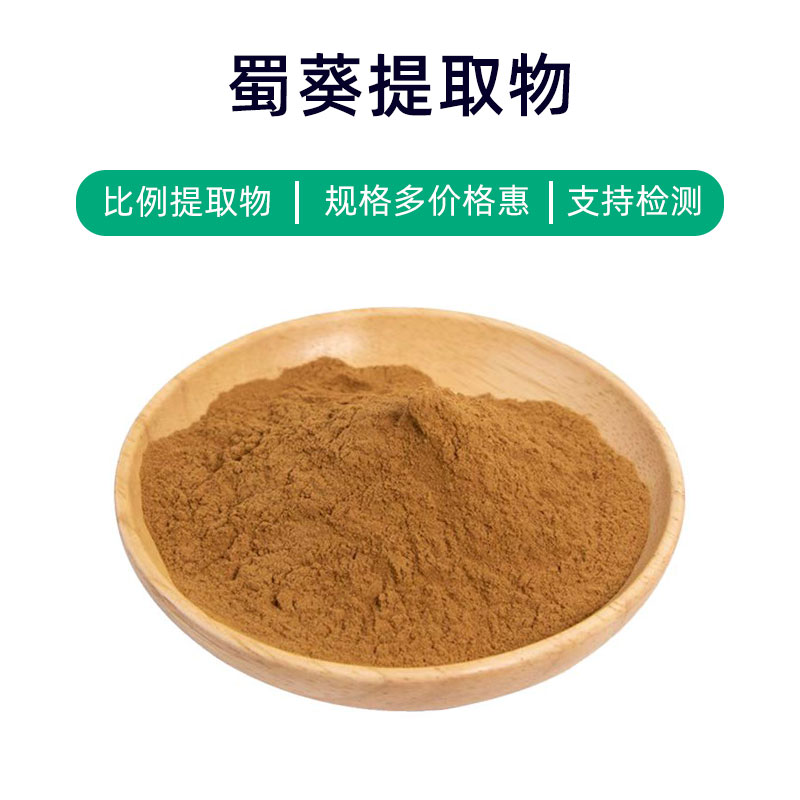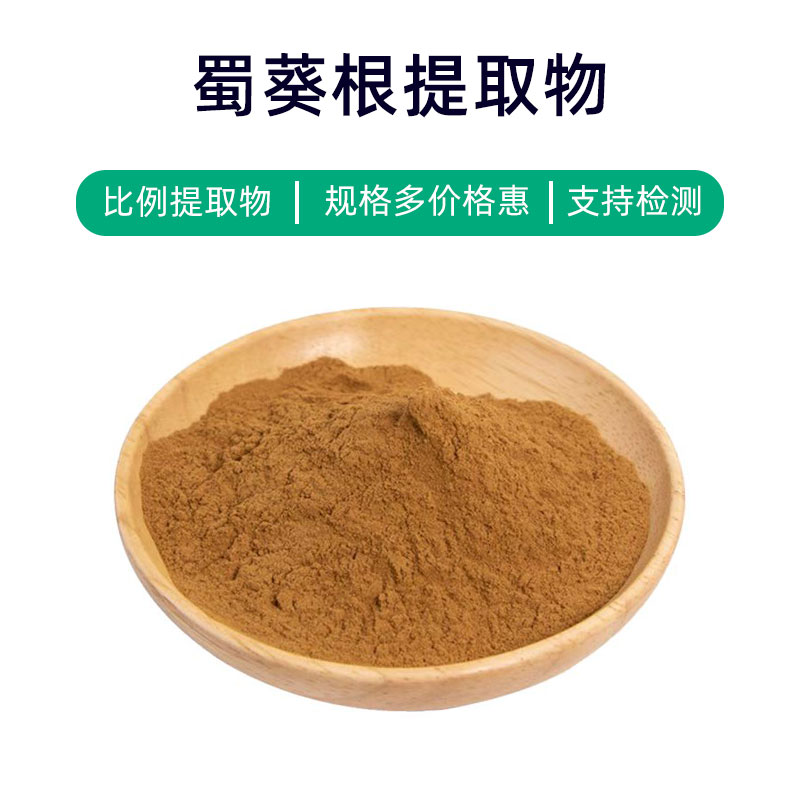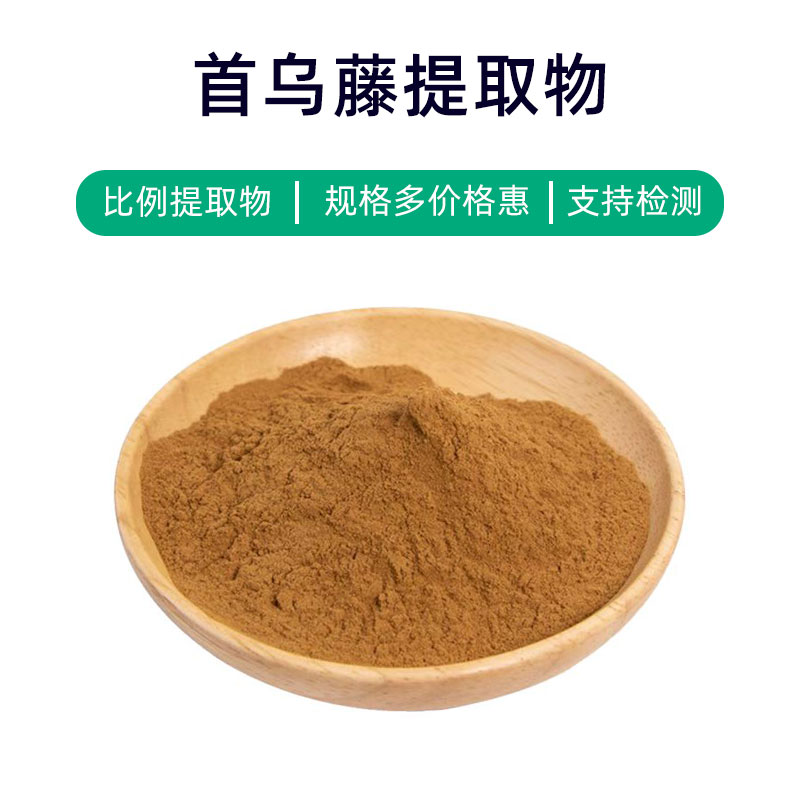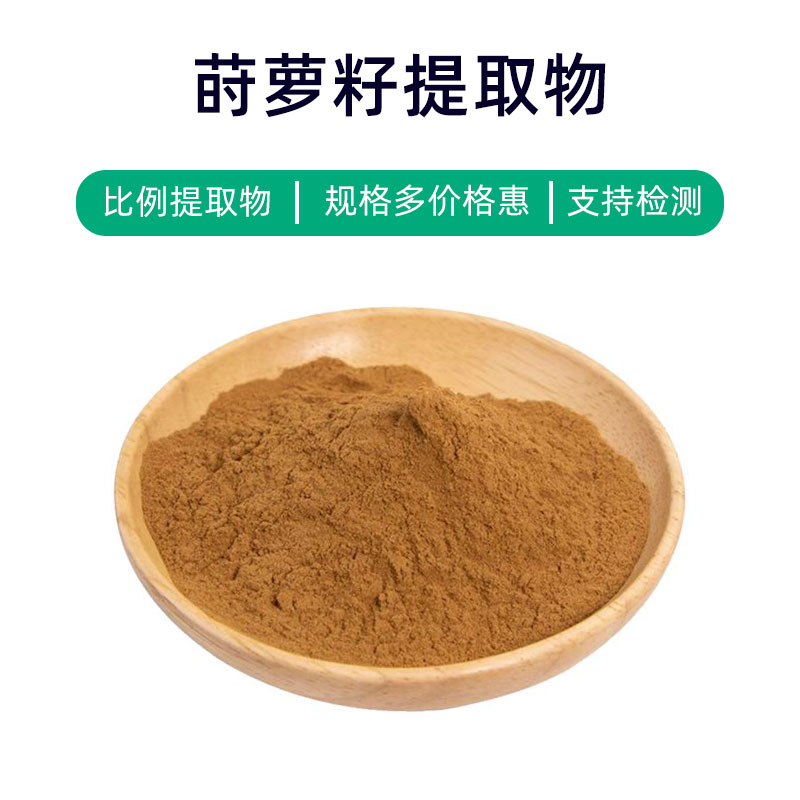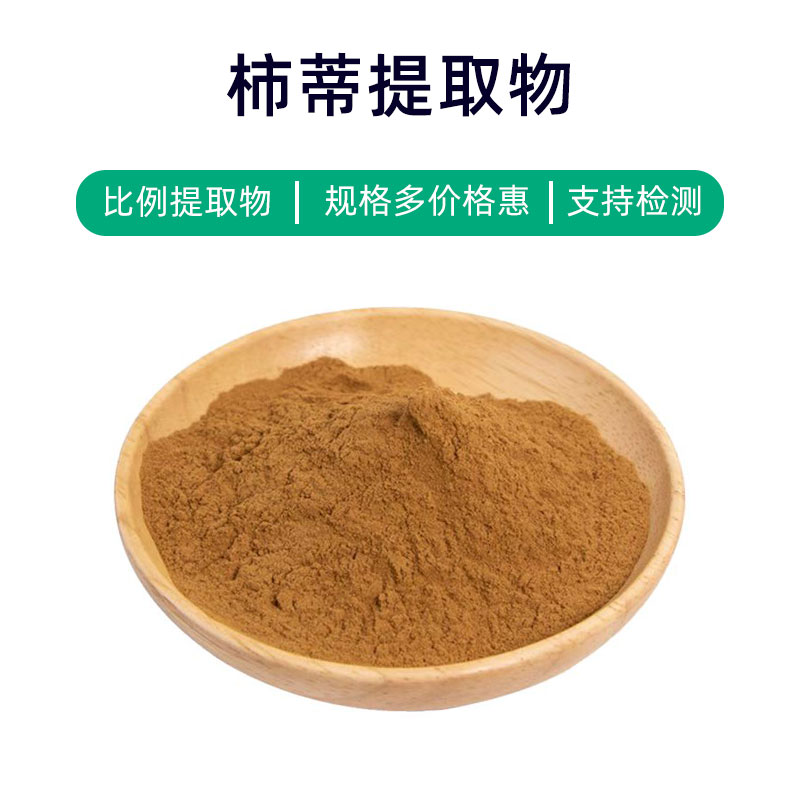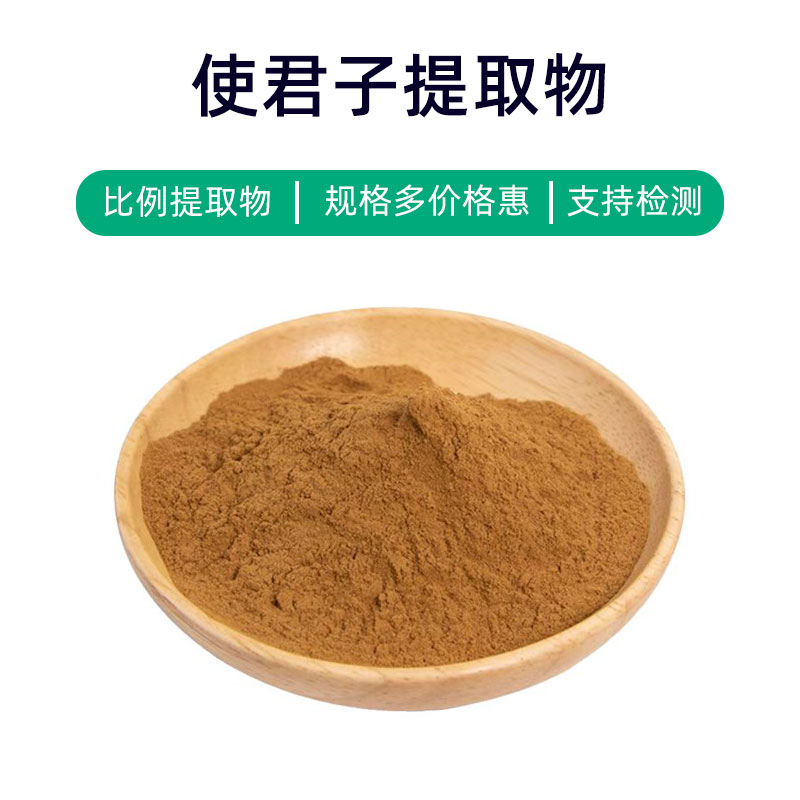Dandelion Extract Product Introduction
Dandelion extract is a natural plant extract derived from the roots, leaves, or whole herb of the dandelion plant. Its main components include flavonoids (such as taraxacin and chicoric acid), polysaccharides, and essential oils. These components confer various benefits and wide applications to dandelion extract.
Firstly, dandelion extract is widely used in the medical field. It is believed to possess diuretic, anti-inflammatory, and antioxidant effects, useful for treating urinary system issues, liver diseases, and rheumatic conditions.
Secondly, it is commonly found in health supplements. It can be included as an ingredient to help regulate body functions, promote metabolism, enhance immunity, and assist in detoxification.
Additionally, dandelion extract is also utilized in food and beverage processing. It can be added to teas, juices, salads, etc., imparting a distinctive herbal aroma while providing antioxidant and health benefits.
In cosmetics, dandelion extract is often found in skincare products and shampoos. It acts as a natural plant extract with soothing, anti-inflammatory, and skin-conditioning properties, helping to care for the scalp, improve hair texture, and nourish and hydrate the skin.
In summary, dandelion extract serves as a natural plant extract with multiple benefits and a broad range of applications across pharmaceuticals, health supplements, food, and cosmetics, providing valuable support for people’s lives and health.
Dandelion Extract Production Process
The production process of dandelion extract generally involves the following main steps:
- Raw Material Preparation: Choose fresh, dry dandelion roots or whole herbs as raw materials. These should be rigorously selected and cleaned to ensure quality and purity.
- Crushing and Grinding: Crush and grind the cleaned, dried dandelion roots or whole herbs to enhance extraction efficiency. Typically, a grinder or jaw crusher is used to create particles suitable for extraction.
- Extraction: Employ appropriate extraction methods (such as water extraction, ethanol extraction, or supercritical fluid extraction) to obtain active components from the crushed dandelion material. During extraction, control temperature, time, and solvent concentration to maximize the yield of target components.
- Filtration and Concentration: Separate the extractive liquid through filtration methods (like filter paper, membrane filters, or centrifuges) to remove residues and impurities. The extract is then concentrated, usually through low-temperature or vacuum concentration to obtain concentrated dandelion extract.
- Drying: Dry the concentrated dandelion extract to reduce moisture content and enhance stability. Common drying methods include spray drying, vacuum drying, or freeze-drying.
- Quality Inspection: Conduct quality checks on the produced dandelion extract, including appearance, physicochemical properties, and active component content. Ensure compliance with relevant quality standards and regulations.
- Packaging and Storage: Finally, package the dandelion extract according to required specifications, typically using sealed aluminum foil bags or plastic containers. Store in a cool, dry, and dark environment to protect against light, oxygen, and moisture, ensuring product stability and shelf life.
Dandelion Extract Effects and Side Effects
As a natural herbal extract, dandelion extract has several effects and benefits, including:
- Antioxidant Action: Rich in various antioxidants like flavonoids and polyphenols, dandelion extract helps neutralize free radicals, reduce oxidative stress, and protect cells from damage, contributing to the aging process.
- Diuretic Detoxification: Dandelion extract has potent diuretic properties, promoting urine production to help eliminate waste and toxins, cleanse the body, improve kidney function, and prevent urinary tract infections.
- Anti-inflammatory and Antibacterial: Containing numerous bioactive components, dandelion extract exhibits anti-inflammatory and antibacterial properties, effective for skin inflammation, oral ulcers, and preventing infections.
- Digestive Aid: Dandelion extract regulates the digestive system, promoting gastrointestinal motility, increasing gastric secretion, improving appetite, and alleviating digestive issues like indigestion and bloating.
- Liver Function Improvement: It protects liver cells, encourages regeneration, lowers serum transaminase levels, and aids in enhancing liver function, thus preventing fatty liver and cirrhosis.
- Blood Sugar Regulation: Research indicates that dandelion extract can lower blood sugar levels and improve insulin sensitivity, assisting in diabetes management and preventing complications.
Dandelion extract is generally considered safe; however, attention should be paid to the following points during use:
- Excessive use may lead to gastrointestinal discomfort such as diarrhea or nausea, so it's essential to adhere to recommended dosages.
- Pregnant or breastfeeding women and those on medication should consult a doctor before use to ensure safety.
- Those with allergies to dandelion should use it cautiously, as it may trigger allergic reactions, such as rashes or breathing difficulties, requiring immediate discontinuation and medical attention.
Dandelion Extract Applications and Dosage
Dandelion extract finds a wide range of applications in pharmaceuticals, food, and cosmetics. Here are its primary usage scenarios and recommended dosages:
- Medical Field:
- Anti-inflammatory Pain Relief: Used in the formulation of anti-inflammatory and analgesic medications, commonly for treating rheumatoid arthritis and other inflammatory diseases. Dosage: 10-20 mg orally, 2-3 times a day.
- Diuretic Detoxification: Effective for treating urinary tract infections and edema, helping to promote detoxification. Dosage: 5-10 g orally, 3 times a day.
- Liver Protection: Beneficial for liver health, used in treating fatty liver and cirrhosis. Dosage: 20-30 mg orally, 3 times a day.
- Food Sector:
- Nutritional Supplements: Frequently included in health products to boost immunity and improve gut health. Dosage: As directed on the product label.
- Flavoring Agent: Can be used as a flavoring ingredient in foods, enhancing taste while providing health benefits.
- Cosmetics Sector:
- Skincare: Rich in antioxidants, dandelion extract can be incorporated into skincare products to help slow aging, improve skin tone, and maintain skin health. Application: Topical use as directed on the product label.
- Hair Care: Beneficial for the scalp, dandelion extract can be used in shampoos and conditioners to improve scalp condition and promote hair growth. Application: Topical use as directed on the product label.
- Dosage Precautions:
- Always follow the physician's or product label instructions regarding dosages to avoid overuse.
- For pregnant or breastfeeding women, children, and the elderly, consulting a physician prior to use is recommended.
- If any adverse symptoms occur during use, discontinue and seek medical advice immediately.
In conclusion, dandelion extract has a promising range of applications across pharmaceuticals, food, and cosmetics. However, attention to dosage and method of use is crucial to ensure safety and effectiveness.
Dandelion Plant Overview: Origin, Distribution, and Growth Environment
Dandelion (scientific name: Taraxacum officinale) is a common perennial herbaceous plant belonging to the Asteraceae family. Here’s detailed information regarding the source plant of dandelion extract, its distribution, and growth environment:
- Plant Characteristics:
- Dandelion plants typically range from 10 to 30 centimeters tall, sometimes reaching up to 70 centimeters. They have a developed root system, with fine, white fibrous roots, and their leaves are elongated and characterized by deep or shallow lobes, displaying the iconic dandelion shape.
- The flower heads consist of numerous small yellow flowers, which mature to form dandelion seeds that are lightweight and wind-dispersed.
- Distribution:
- Dandelions are widely distributed across temperate and subtropical regions globally, making them a common wild plant. They thrive in grasslands, fields, along roadsides, in wastelands, and near human habitation.
- Their prevalence spans Europe, North America, and Asia, especially flourishing in grassy and open areas.
- Growth Environment:
- Dandelions have low environmental requirements, being cold-resistant, drought-tolerant, and adaptable, often found in sunny, well-drained locations.
- They prefer organic-rich soil but can also grow in less fertile soils. During their growth period, dandelions tend to reproduce rapidly and may become weeds in some farmland or grasslands.
- Reproductive Methods:
- Dandelions primarily reproduce through seeds. The mature fruit disperses seeds across the surrounding area through wind forces.
- Additionally, they can reproduce via underground creeping rhizomes, providing strong survival and propagation capabilities.
In summary, dandelions are a common wild plant with strong adaptability to growing environments, widely distributed across temperate and subtropical regions globally, and frequently found in fields, pastures, and near human settlements. Their ability for rapid reproduction through seed dispersal and underground rhizomes ensures their continued existence.
Dandelion Extract Processing and Storage
The processing of dandelion extract generally involves several steps: First, freshly harvested dandelion roots are cleaned thoroughly. The cleaned roots are then dried, either by air-drying or using a dehydrator, to remove excess moisture. Next, the dried dandelion roots are crushed and ground to prepare for the extraction process. During extraction, methods like water extraction or ethanol extraction are utilized to isolate the active components. Finally, processes such as filtration, concentration, and drying are employed to yield the final dandelion extract product.
For storage, dandelion extract should be kept in a cool, dry, and ventilated area, protecting it from direct sunlight and high temperatures. It's also important to avoid contact with harmful gases or odorous substances to maintain quality. Generally, seal it to prevent moisture and dust contamination, which can extend the shelf life of dandelion extract.
Monica Sun is a seasoned expert in the plant extraction industry with over a decade of experience in research and production. She specializes in the extraction and purification of plant active ingredients, focusing on driving innovation in natural product applications. Monica has participated in the development of multiple functional plant extracts, delivering high-value natural raw material solutions for the health food, pharmaceutical, and dietary supplement sectors.









